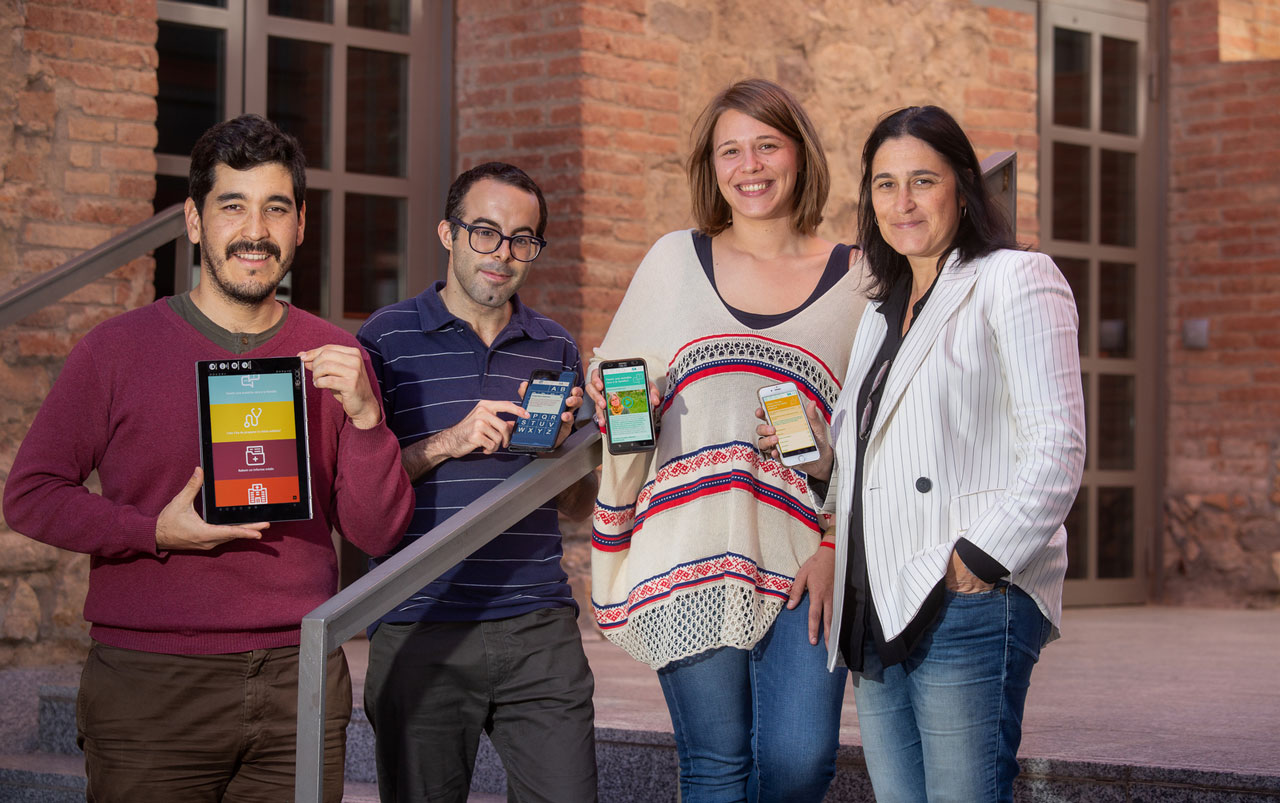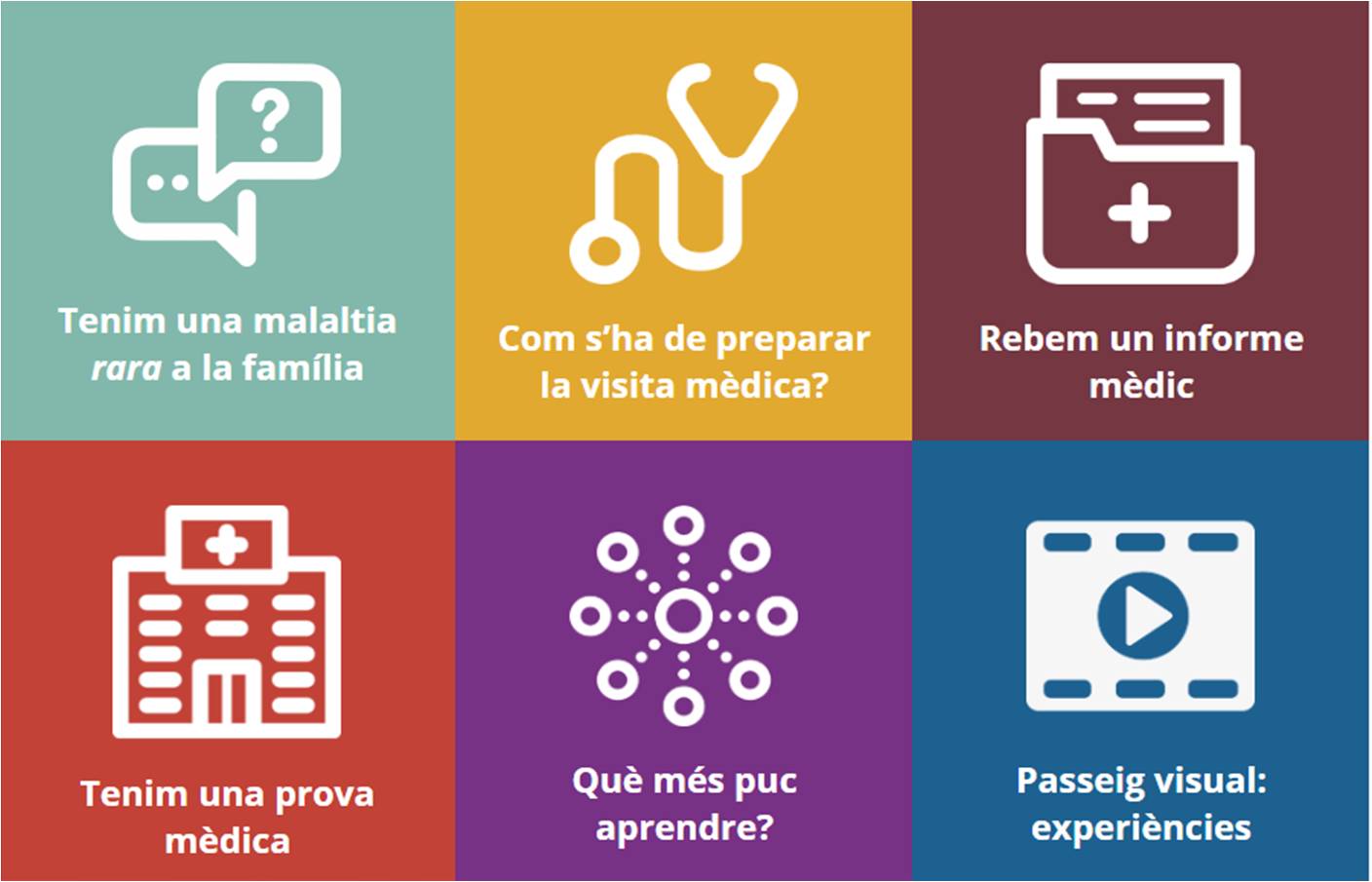Projecte Junts
8. Innova
JUNTS facilitates communication between healthcare professionals and families
JUNTS: overcomes socio-educational barriers and promotes literacy in the face of interferences and difficulties in understanding information and documents addressed to families of children affected by rare diseases (RecerCaixa, 2015).
The motivation behind this project is a very common problem caused by linguistic and cognitive interference. Sometimes the messages we receive from healthcare professionals are hard to assimilate and fully understand, and even more so in the context of a rare pediatric disease.
That is why, the main goal of the JUNTS project is to offer solutions that enable more inclusive literacy for families and patients. The project enjoys the support of the RecerCaixa 2015 programme that brings together the ‘la Caixa’ Foundation and the Catalan Association of Public Universities (ACUP), and is led by professors Rosa Estopà, from the UPF’s Department of Translation and Language Sciences and Manuel Armayones, from the Psychology and Education Sciences Programme and development director of the eHealth Center at the Open University of Catalonia. The project has mainly been carried out by researchers from the IULATERM group at UPF (70%) and researchers form the PSiNET group at the UOC (30%), with the collaboration of doctors and researchers from UPF, the University of Barcelona, the Cardenal Herrera University in Valencia, Vall d’Hebron Hospital and the Terrassa Healthcare Consortium. In addition, it has benefited from the advice and support of FEDER, the Spanish Federation of Rare Diseases.

Improving communication leads to greater transformative capacity and increases the potential for inclusiveness
JUNTS is an initiative set up to improve communication between healthcare professionals, patients/families and associations, and above all empower families in communicative situations regarding their children’s illnesses. It also aims to improve people’s transformative capacity, offering scientific solutions for specific communication issues for both healthcare professionals and the affected population. In addition, the organisation increases its inclusive potential by engaging responsibly with society in its research, both during the stages of analysis and the subsequent applications.
The challenge of this project is to make medical/healthcare information more accessible to families of children that are suffering from rare diseases in order to promote empowerment in a more symmetrical model of communication between doctors and patients. The initial results, therefore, are the fruit of an analysis of people’s comprehension of authentic medical reports.
Medical reports that are hard to understand
The UPF working group has studied a selection of medical reports from different healthcare departments for children with rare diseases. As a result of their analysis, they have established a set of indicators that have enabled them to create a series of parameters that distort people’s understanding of these reports. These indicators are discursive, syntactic, orthographical and, above all, lexical. The absence of verbs, omission of multiple subjects, absence of connectors, spelling mistakes, punctuation mistakes, high percentage of Graeco-Latin medical terms, high percentage of medical terms with respect to the total number of words, overuse of acronyms and heterogeneity in the use of abbreviations are just some of the indicators that show how a medical report can be difficult to understand.
Based on these results, an experimental trial was designed to measure users’ level of understanding of the reports. A real medical report was used and another linguistically and cognitively enriched version of the same report was written, for which all the aforementioned parameters were taken into account. The experiment showed, with a score of 4.1, that even the most able users failed to fully understand the real medical report, whereas, all users were able to understand the enriched version. These results have led to the creation of a monograph on writing comprehensible medical reports which is due to be published during 2019.
An application and an online platform: COMJunts
The COMJunts web-app is one of the first outcomes of the research undertaken in the framework of the JUNTS project, in order to help the families of children suffering from a rare disease to deal with the main communicative situations that arise with healthcare professionals. It was presented publicly on Thursday 6 September in the Sala Beta in the CosmoCaixa. In the words of the project’s co-director, Rosa Estopà, “since the project was presented publicly, there have been a lot of downloads of the application and we hope to have the materials in book format towards the middle of October for those users who don’t use technology”. She also added that “the model we have designed is applicable to other kinds of medical communicative situations and other diseases. For example, we’re thinking about adapting it to diseases in their palliative phase”.
Participants in the creation of the application include linguists from the IULATERM research group from the UPF’s Institute for Applied Linguistics and psychologists from the PSiNET research group (Psychology, Healthcare and the Internet) from the UOC, and also researchers and doctors from the Clinical and Molecular Genetics Department and the Rare Diseases Unit of Vall d’Hebron Hospital. It has also enjoyed the collaboration and advice of FEDER and its member families. “In the coming weeks FEDER will offer the application on its website and it should be available at the Latin American Association of Rare Diseases, meaning the application will reach its target audience more easily”, Estopà said.
The COMJunts application can be downloaded on Android and iOS devices, and there is also a web-based version available

The thread that runs through the application, which can already be downloaded on Android and iOS devices, and is also available in an online version, are seven challenges which invite families to place themselves in different communicative situations and deal with the challenges arising from each one.
These situations include, for example: the day we are told that our child has a rare disease, when we have a doctor’s appointment, when we are given a medical report or when we have to take our child for medical tests.
Each challenge is illustrated with a video with testimonials from affected families and healthcare professionals and with a hypertext on how to manage the communicative situation and adapt it to families’ cognitive needs. In addition, the more complex terms refer users to a basic dictionary for patients, especially created for the application, as well as to additional information, including advice, resources and useful links.
The COMJunts web-app is available in Catalan and Spanish.
My First Illustrated Medical Dictionary
As a complement to this and within the framework of the Playing to define science project, Professor Rosa Estopà has led the production of the Primer diccionari de medicina il·lustrat (My First Illustrated Dictionary of Medicine) aimed at children aged between 8 and 14. The dictionary has enjoyed the advice and financial support of the Official College of Doctors of Girona and the IULATERM-UPF group. This is a pioneering and original initiative as it is the first dictionary of medicine for children in Catalan.
The Primer diccionari de medicina il·lustrat (Publicacions de l’Abadia de Montserrat, 2018) approaches the subject of healthcare through the eyes of children and contains illustrations drawn by children and a language inspired in their own words. It is a pioneering initiative led by Rosa Estopà in which 1,200 children from all over Catalonia have participated. This initiative is fruit of the project “Playing to define science” which has already resulted in the publication of two books: the Petit diccionari de ciència (Little Dictionary of Science) and the Petit imaginari de ciència (Little Picture Book of Science). The dictionary was presented on 17 May 2018 in the Official College of Doctors of Girona, and between 29 and 30 June the first presentations took place in education centres in Vilajuïga, Girona, Pineda de Mar, Malgrat de Mar and Cerdanyola del Vallès. This autumn presentations will be done in pediatric and pediatric nursing departments in hospitals in Catalonia.
The Primer diccionari de medicina il·lustrat is a book that explains the meaning and use of the most basic words that children hear and use when talking about their health and their illnesses. Eight Catalan schools have contributed to the book and, over the course of three academic years, children in second, third and fourth of primary have explained and drawn one word every week in their classrooms. Once the definitions were collected and compiled, linguists then deconstructed them and put them back together again with the help of pediatricians. The information was used to produce definitions for children and correct common misunderstandings thereby producing information that is both positive and palliative.
“We have used the information the children gave us that was scientifically correct to create the definitions, and we’ve improved knowledge by disproving the the common fallacies and correcting the knowledge deficiencies that certain explanations revealed, such as, for example, that Down syndrome is a disease, that cancer is contagious and always kills or that anorexia is a disorder that only affects girls”
The dictionary contains 200 nouns commonly used to speak about health, presented in alphabetical order, and 150 explanations with their corresponding drawings. There are also 32 words that are synonyms of other words, i.e., different ways of referring to the same health issue. At the end of the book there are 33 verbs that have a specific meaning in medicine (disinfect, heal, inject, prescribe, bleed), presented in sentences created by the school children, and an atlas of ten drawings of the human body, which make use of 130 different terms. In total, the dictionary includes 366 words that readers can use to talk about medicine.
Useful links and more information:
Versió web de l’app-web COMJunts
Llibre COMJunts descarregable per a web en pdf
Primer diccionari de medicina il·lustrat (Publicacions de l’Abadia de Montserrat, 2018) (PDF)
